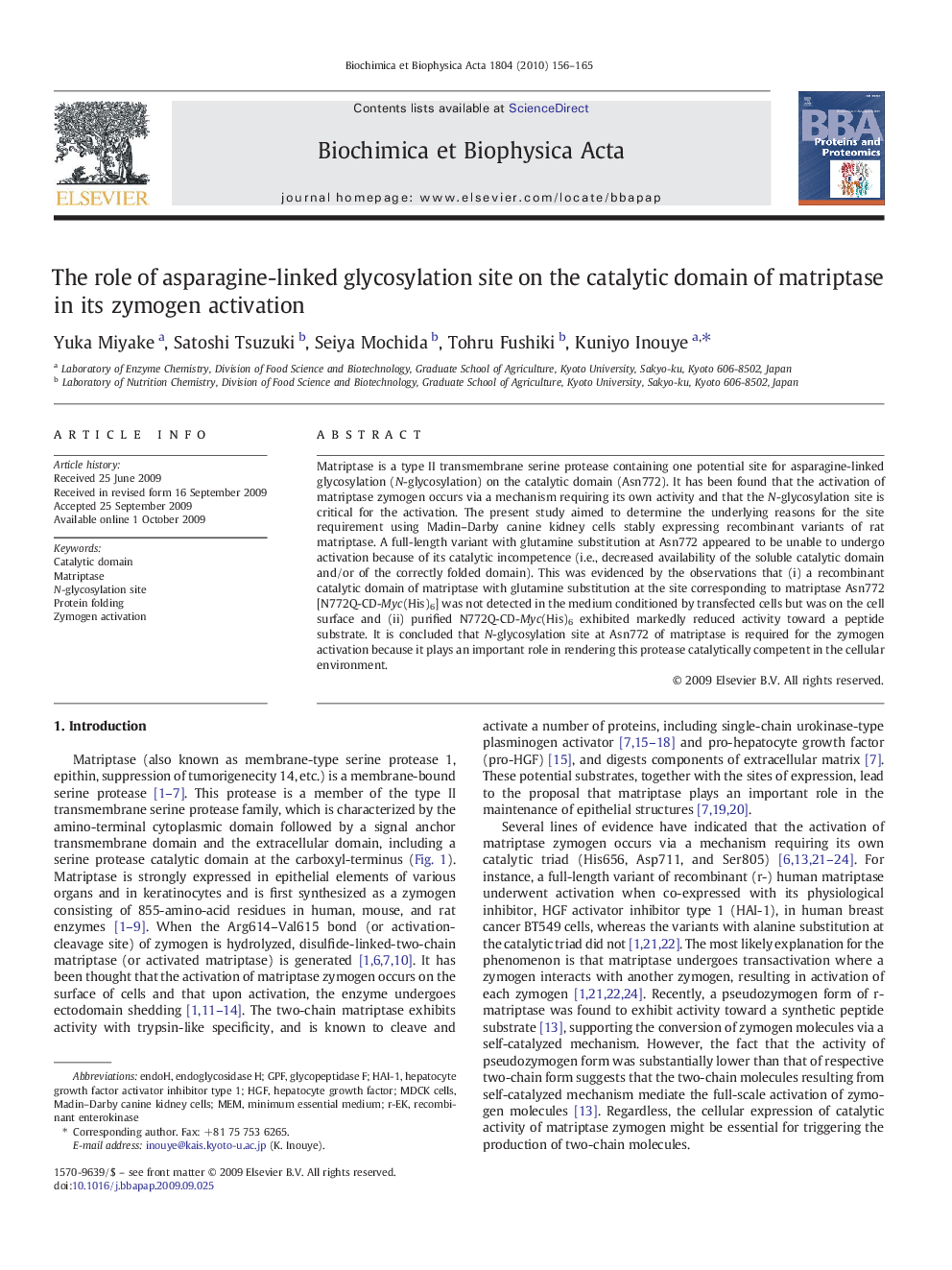| Article ID | Journal | Published Year | Pages | File Type |
|---|---|---|---|---|
| 10536971 | Biochimica et Biophysica Acta (BBA) - Proteins and Proteomics | 2010 | 10 Pages |
Abstract
Matriptase is a type II transmembrane serine protease containing one potential site for asparagine-linked glycosylation (N-glycosylation) on the catalytic domain (Asn772). It has been found that the activation of matriptase zymogen occurs via a mechanism requiring its own activity and that the N-glycosylation site is critical for the activation. The present study aimed to determine the underlying reasons for the site requirement using Madin-Darby canine kidney cells stably expressing recombinant variants of rat matriptase. A full-length variant with glutamine substitution at Asn772 appeared to be unable to undergo activation because of its catalytic incompetence (i.e., decreased availability of the soluble catalytic domain and/or of the correctly folded domain). This was evidenced by the observations that (i) a recombinant catalytic domain of matriptase with glutamine substitution at the site corresponding to matriptase Asn772 [N772Q-CD-Myc(His)6] was not detected in the medium conditioned by transfected cells but was on the cell surface and (ii) purified N772Q-CD-Myc(His)6 exhibited markedly reduced activity toward a peptide substrate. It is concluded that N-glycosylation site at Asn772 of matriptase is required for the zymogen activation because it plays an important role in rendering this protease catalytically competent in the cellular environment.
Keywords
Related Topics
Physical Sciences and Engineering
Chemistry
Analytical Chemistry
Authors
Yuka Miyake, Satoshi Tsuzuki, Seiya Mochida, Tohru Fushiki, Kuniyo Inouye,
